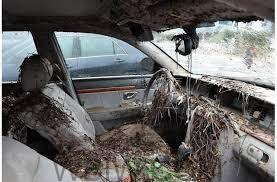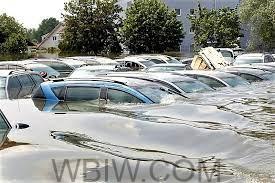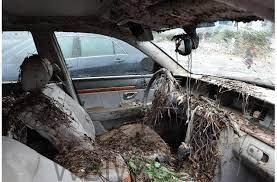
INDIANA – Attorney General Todd Rokita is warning Hoosier consumers to watch out for flood-damaged vehicles when shopping for used cars.
Hurricane Ida recently brought widespread and devastating flooding throughout large portions of the southern United States. As affected communities begin to recover from the damage, car buyers around the country, including in Indiana, need to be aware of the likelihood that increased numbers of flood-damaged vehicles will be offered for sale.

“We take action every day against individuals who have victimized Hoosiers by engaging in deceptive and unfair business practices,” Attorney General Todd Rokita said. “But we also stress education and outreach to help Hoosiers avoid becoming victims in the first place.”
As a result of Hurricane Ida, tens of thousands of vehicles were likely submerged by flooding. Prior to Hurricane Ida, there were already almost a half-million flood-damaged vehicles on U.S. roads. That number is now likely to increase significantly.

Flood damage to a vehicle is often catastrophic, and even if the most obvious damage is repaired, the vehicle can suffer long-lasting effects. Besides cosmetic and engine damage, floods can short out a vehicle’s electrical system and compromise safety features such as airbags and anti-lock brakes. Floods also can cause mold and mildew infestation that can result in health issues for passengers long after a vehicle was submerged.
If a vehicle is flood-damaged, its title should be branded as “salvage” or “flood damage,” and such a title brand must be disclosed in writing to a purchasing consumer. However, some flood-damaged vehicles lack such a title brand due to fraudulent activity. Such unbranded vehicles will be moved to states throughout the country, including Indiana, and sold to unsuspecting consumers. With the current shortage of used car inventory, unscrupulous sellers will likely be even more aggressive in pushing flood-damaged vehicles onto the market.

To reduce the risk of unknowingly purchasing a flood-damaged vehicle, consumers should follow these steps prior to making a transaction:
- Ask the dealer to provide a vehicle history report. If the dealer refuses to provide such a report, purchase one yourself. Consumers can obtain a vehicle history report from a variety of sources, such as Carfax, Autocheck, the National Motor Vehicle Title Information System, or the National Insurance Crime Bureau.
- Check the vehicle’s history report to see if there are any reported title brands on the vehicle, such as “salvage,” “rebuilt,” “junk” or “flood damage.” Also note on the report the state or geographic area where the vehicle was last titled or registered to determine if the vehicle was recently located in an area affected by flooding.
- Ask to see the vehicle’s title, or a copy of the title, and check to see if the title includes any title brands, including “salvage,” “rebuilt,” “junk” or “flood damage.”
- Inspect the vehicle closely for any signs of flood damage by checking to ensure all electronic components, including the heat and air conditioning, are operational. Check for any signs of mud or rust anywhere on or in the vehicle, including the engine compartment. Check for discolored or mildewed carpeting. Note whether the vehicle has any odd smells. Be suspicious of a vehicle that smells like mildew. The aroma of heavy disinfectants and cleaners may also be an indicator that someone has tried to mask a mold or odor problem.
- Take the vehicle for a test drive.
- Have an independent mechanic of your choosing inspect the vehicle prior to purchase. Specifically ask the mechanic to check for any signs of flood damage.
If a consumer suspects a recently purchased vehicle was flood-damaged, and such damage was not disclosed prior to sale, the consumer should file a consumer complaint at www.in.gov/attorneygeneral.



